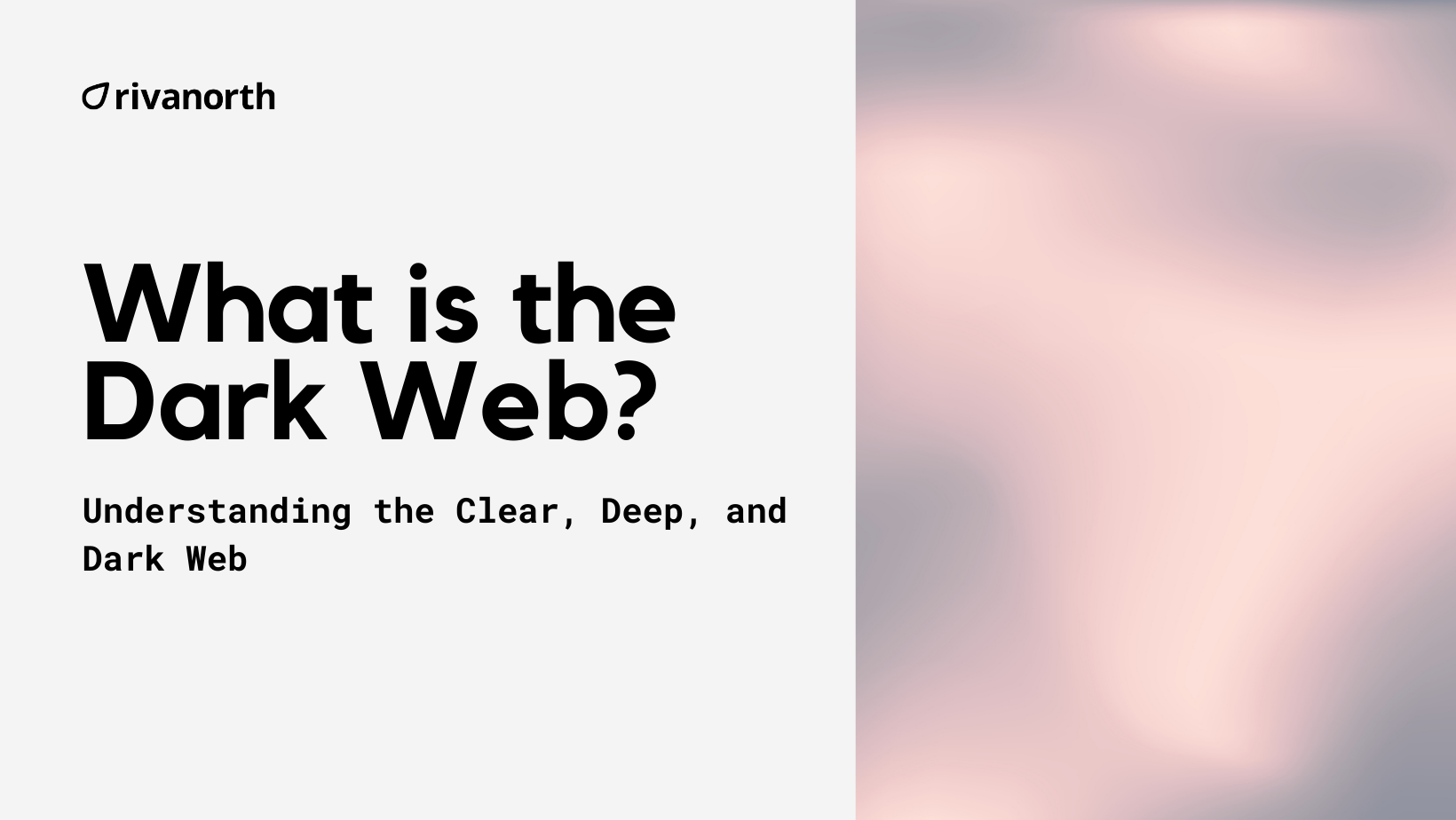What Is the Dark Web? Understanding the Clear, Deep, and Dark Web
Read Time 6 mins | 10 January 2025

When navigating the internet, most people interact with the clear web, but terms like “deep web” and “dark web” often spark curiosity and misconceptions. While these layers of the internet share some similarities, they serve very different purposes. Understanding these distinctions is vital for individuals and businesses aiming to protect their digital presence and security. In this article, we’ll explore what the dark web is and how it compares to the clear web and deep web.
What Is the Clear Web?
The clear web, also known as the surface web, is the part of the internet that is publicly accessible and indexed by standard search engines like Google, Bing, or Yahoo. When you search for a recipe, browse social media, or shop online, you’re using the clear web.
Examples of the Clear Web:
- Public websites and blogs
- News articles
- Social media platforms
- Online shopping sites
Key Characteristics of the Clear Web:
- Easily accessible: Requires no special tools or permissions.
- Publicly indexed: Content is searchable and visible to anyone with internet access.
- Safe for general use: Most online activity happens here, making it the most familiar part of the internet.
What Is the Deep Web?
The deep web refers to all parts of the internet that are not indexed by standard search engines. This includes content that is private, paywalled, or requires authentication to access. While it sounds mysterious, the deep web is mostly made up of everyday services that people use for secure communication and data management.
Examples of the Deep Web:
- Email accounts (e.g., your Gmail inbox)
- Online banking portals
- Corporate intranets
- Subscription-based services (e.g., streaming platforms or academic journals)
Key Characteristics of the Deep Web:
- Not inherently dangerous: Most deep web content is legitimate and secure.
- Restricted access: Requires login credentials or direct links to access.
How Does the Deep Web Differ from the Clear Web?
Unlike the clear web, the deep web is hidden from search engine crawlers to maintain privacy and security. For instance, your private messages on social media or your online banking transactions reside on the deep web.
What Is the Dark Web?
The dark web is a small, intentionally hidden subset of the deep web that requires special software, such as the Tor browser, to access. While the deep web includes private but benign content, the dark web is often associated with anonymity and unregulated activity.
Examples of the Dark Web:
- Marketplaces for illicit goods (e.g., drugs, counterfeit documents)
- Hacking forums and ransomware services
- Stolen data and credentials
- Legitimate uses, such as anonymous communication for journalists and whistleblowers
Key Characteristics of the Dark Web:
- Anonymity: Uses encryption tools to hide users’ identities and locations.
- Mixed purposes: While some content is legitimate, much of the dark web harbours illegal activity.
- Access requires special tools: Software like Tor or I2P is necessary to reach dark web content.
Clear Web vs Deep Web vs Dark Web: Key Differences
| Aspect | Clear Web | Deep Web | Dark Web |
|---|---|---|---|
| Definition | Publicly indexed and searchable | Not indexed by search engines | A subset of the deep web requiring special software to access |
| Purpose | Public information and general use | Private, secure content (e.g., personal accounts, databases) | Anonymous, often illicit activities |
| Access | Open to anyone | Requires credentials or direct URLs | Requires specialised tools like Tor |
| Risk Level | Low risk | Generally safe | Potentially dangerous |
Why Does the Difference Matter?
Understanding these distinctions is essential for managing cybersecurity and protecting sensitive information:
- For businesses: Data breaches can lead to sensitive information being sold on the dark web. Dark web monitoring tools like Oko can help identify and mitigate these risks.
- For individuals: Avoiding the dark web can reduce exposure to scams and illicit content, while understanding the deep web ensures safe access to private online services.
How to Protect Your Business from Dark Web Threats
If you’re concerned about dark web risks, take proactive steps to safeguard your business:
- Implement Dark Web Monitoring Services: Use tools like Oko to continuously monitor for exposed credentials, sensitive data, or threats targeting your organisation.
- Update and Patch Software Regularly: Ensure all systems, applications, and devices are updated to fix known vulnerabilities.
- Conduct Regular Penetration Testing: Simulate cyberattacks to identify weaknesses in your network and applications.
- Strengthen Access Controls: Use strong, unique passwords and enable multi-factor authentication (MFA) across all accounts.
- Educate Employees on Cybersecurity Best Practices: Train your team to recognise phishing attacks and secure sensitive data.
- Encrypt Sensitive Data: Protect critical information in transit and at rest to minimise exposure in case of a breach.
- Develop an Incident Response Plan: Prepare a strategy to respond quickly and effectively if your organisation is targeted.
Conclusion
The clear web, deep web, and dark web are distinct layers of the internet, each serving unique purposes. While the clear web is the public-facing part of the internet, the deep web provides private and secure online services. The dark web, however, often poses significant risks and requires vigilance and proactive monitoring.
To protect your business from dark web threats, consider using OKO’s comprehensive monitoring services or request a free Dark Web Security Assessment (DWSA) today to uncover potential risks.
Request Your Free Dark Web Security Assessment Now
Join Our Newsletter